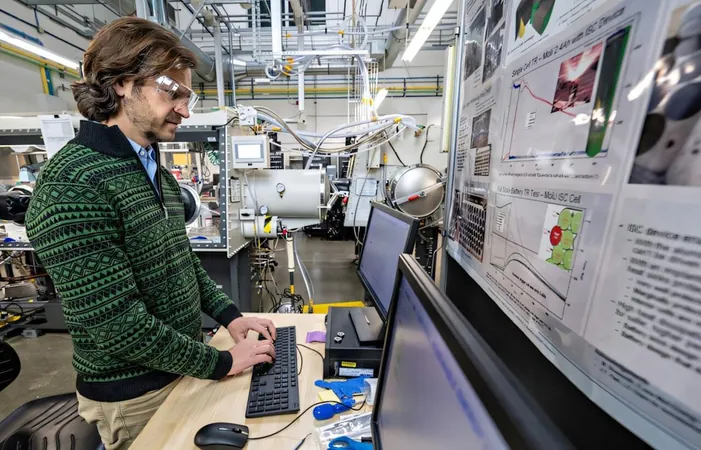
Revolutionary Algorithm Boosts Underwater Robotics with Affordable Acoustic Sensors
2025-05-28
Author: Nur
Diving into the Depths of Innovation
Underwater robotics are paving new ways to explore the vast and mysterious oceans of our planet, where access is often treacherous for humans. Equipped with an array of sensors and cameras, these machines navigate unseen environments, capturing invaluable data.
A Breakthrough in Acoustic Navigation
In a pioneering study, Northeastern University researchers Alan Papalia and David Rosen have unveiled a groundbreaking algorithm that enhances the accuracy of acoustic navigation technology used in underwater robotics. This method uses acoustic sensors that emit and analyze sound waves to help robots determine their precise location in the water.
Their findings are detailed in the latest issue of IEEE Transactions on Robotics, shedding light on how these sensors can be employed in various configurations—whether attached to robots to measure distances between them or anchored to the seafloor to track the robot's position.
The Challenge of Acoustic Sensors
Despite being more affordable and accessible, acoustic sensors have faced significant challenges in reliability and precision. According to Papalia, these sensors can merely indicate distance from other points, leaving users with ambiguity about exact positioning.
"Even with perfect sensors, you only know you're somewhere on a circular perimeter around a point, making navigation daunting without a reliable starting point," he explains. This gap in reliability has hindered advancements in underwater robotics.
A Solution with Major Implications
The new algorithm promises to revolutionize underwater navigation by eliminating uncertainties in positioning. The potential to produce reliable navigation systems at a mere $10,000, as opposed to the current average of $500,000, could unlock a new era in underwater exploration.
"We aim to use cheaper sensors without compromising reliability, thereby enabling scientists to conduct bold research without financial constraints," Papalia states.
Broad Applications Beyond Robotics
While primarily targeting roboticists, the implications of this research extend to scientists across multiple disciplines. A major application lies in climate change studies, particularly in understanding glacier melting and sea level rise.
Notably, Papalia's advisor, Hanu Singh, has utilized these robotic platforms in Arctic environments to gather crucial data on ice dynamics which contribute significantly to global sea rise.
Testing the Algorithm in Real-World Scenarios
The researchers have successfully trialed their algorithm using autonomous surface vehicles on the Charles River, but its versatility extends to various robotic systems, including aerial and terrestrial models.
"Our mission is to equip scientists with dependable robotic tools, allowing them to aggressively pursue their research agendas and tackle the pressing challenges of our day," Papalia concludes.


 Brasil (PT)
Brasil (PT)
 Canada (EN)
Canada (EN)
 Chile (ES)
Chile (ES)
 Česko (CS)
Česko (CS)
 대한민국 (KO)
대한민국 (KO)
 España (ES)
España (ES)
 France (FR)
France (FR)
 Hong Kong (EN)
Hong Kong (EN)
 Italia (IT)
Italia (IT)
 日本 (JA)
日本 (JA)
 Magyarország (HU)
Magyarország (HU)
 Norge (NO)
Norge (NO)
 Polska (PL)
Polska (PL)
 Schweiz (DE)
Schweiz (DE)
 Singapore (EN)
Singapore (EN)
 Sverige (SV)
Sverige (SV)
 Suomi (FI)
Suomi (FI)
 Türkiye (TR)
Türkiye (TR)
 الإمارات العربية المتحدة (AR)
الإمارات العربية المتحدة (AR)